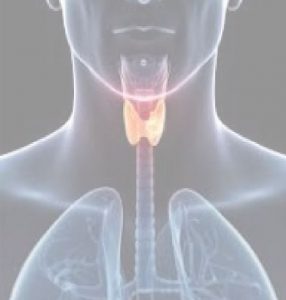Airway Orthodontics: The New Paradigm
 Despite the correlations and current research between airway and malocclusion, a significant amount of controversy still exists in the medical and dental community. The direct relationship between airway development and cranial formation significantly affects the field of orthodontics, breathing, and the temporomandibular joint. Airway focused orthodontics is
Despite the correlations and current research between airway and malocclusion, a significant amount of controversy still exists in the medical and dental community. The direct relationship between airway development and cranial formation significantly affects the field of orthodontics, breathing, and the temporomandibular joint. Airway focused orthodontics is
increasingly playing a pivotal role in regards to treatment planning, amongst contemporary orthodontists who
value comprehensive care. We cannot live without the breath and the way we breathe plays an important role in
the quality of life. Breathing is one of the most vital functions of the human body. Every breath we take can have a positive or negative impact on our bodies depending on how it is
performed; and it has been well established that normal breathing should be achieved through the nose. Nasal breathing provides multiple benefits. The complex filtering system in the nose, purifies the air we breathe before it enters the lungs. Nitric acid is produced in cells by certain enzymes and is believed to play a large role in regulation of blood flow, platelet function, immunity, and neurotransmission. Mouth breathers are more likely to experience sleep disorders, fatigue and decreased productivity. Proper management and early detection of nasal congestion is also key to stopping mouth breathing in patients. Habitual mouth breathing has serious implications on a patient’s oral and long term health.
Breathe better to feel better.
A mouth breathing patient’s tongue is positioned low which in turn creates a larger space which results in abnormal tongue activity. This abnormal tongue activity can cause excessive force on the teeth during swallowing. Malocclusion in children and periodontal disease as well facial muscle pain in adulthood is common.
Enlarged adenoids and tonsils in children is a primary cause of nasal airway obstruction, leading to mouth breathing, which, in turn, may affect facial shape and form. Misaligned teeth, facial deformities, poor growth and nervous system issues are also negative side effects of mouth breathing. Orthodontists, otolaryngologists (ENT’s) and dentists should collaborate closely in the management of certain patients. The preventative, corrective and interceptive practice guidelines of orthodontics should primarily aim at improving the airway of the patient. The improvement of the patient’s smile and teeth positioning should be secondary. The dental team should focus on achieving optimal functioning of the respiratory system while also focusing on the position of the jaw and their occlusal relationship.
 Factoring the airway in the early developmental stage will positively affect the patient’s long term health. For example, enlarging the palate which allows room for adult teeth and optimal jaw growth will help sustain the best airway possible. Early treatment is critical because it fixes airway problems that can have a negative effect on jaw growth and also could prevent sleep apnea.
Factoring the airway in the early developmental stage will positively affect the patient’s long term health. For example, enlarging the palate which allows room for adult teeth and optimal jaw growth will help sustain the best airway possible. Early treatment is critical because it fixes airway problems that can have a negative effect on jaw growth and also could prevent sleep apnea.
Orthodontists who primarily focus on the airway, ensure that enough room for the teeth is created without causing the patient any form of obstruction that could
potentially hinder the patient’s normal functioning.
A treatment plan based on the collaborating relationship between those providers, has shown to enhance and improve the outcome of patients suffering from certain conditions. By aligning the medical and dental industry while collaborating directly with providers , your goal of comprehensive care for your patients will be more easily
obtained. Your patients will express the utmost gratitude for not only straightening their teeth but also focusing on their overall health and well being.
Written by Allison Norris | American Aligner Society
Contributions by Lisa Wells | Clear Ortho Solutions
